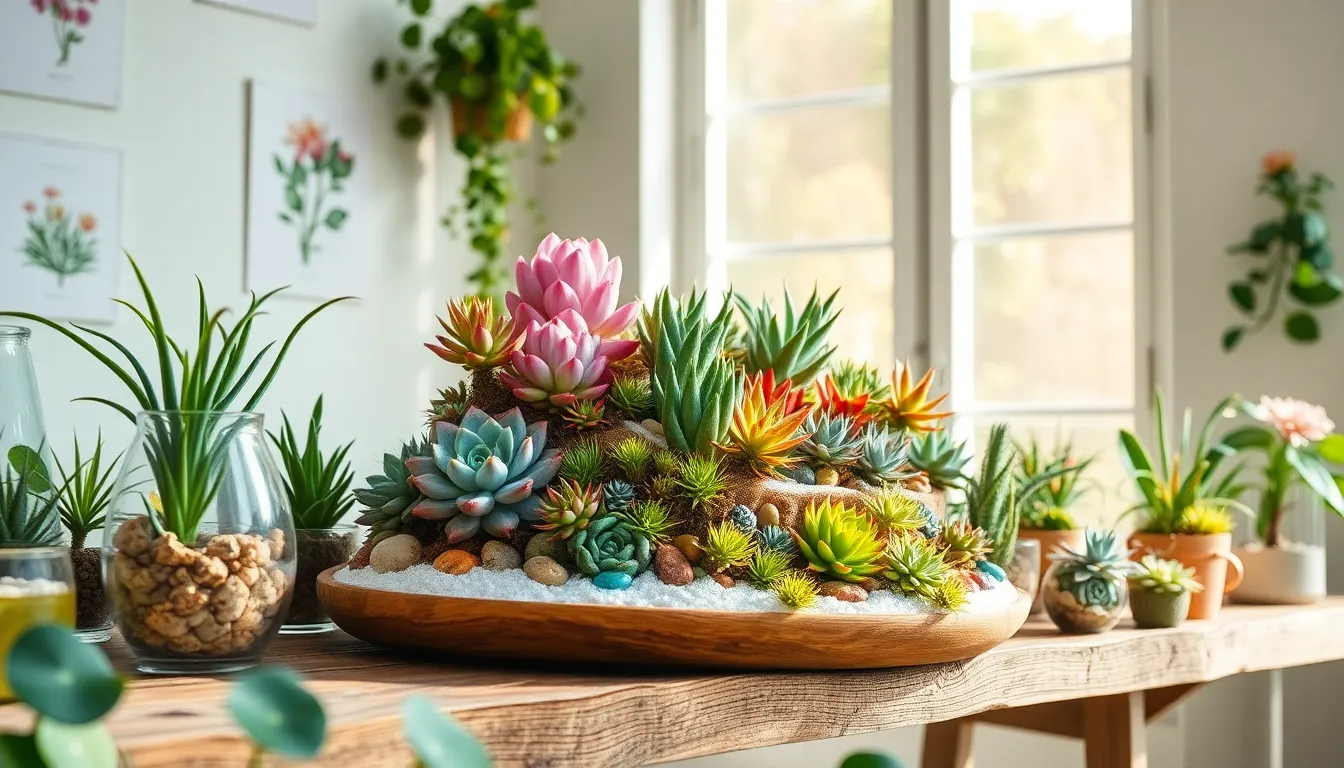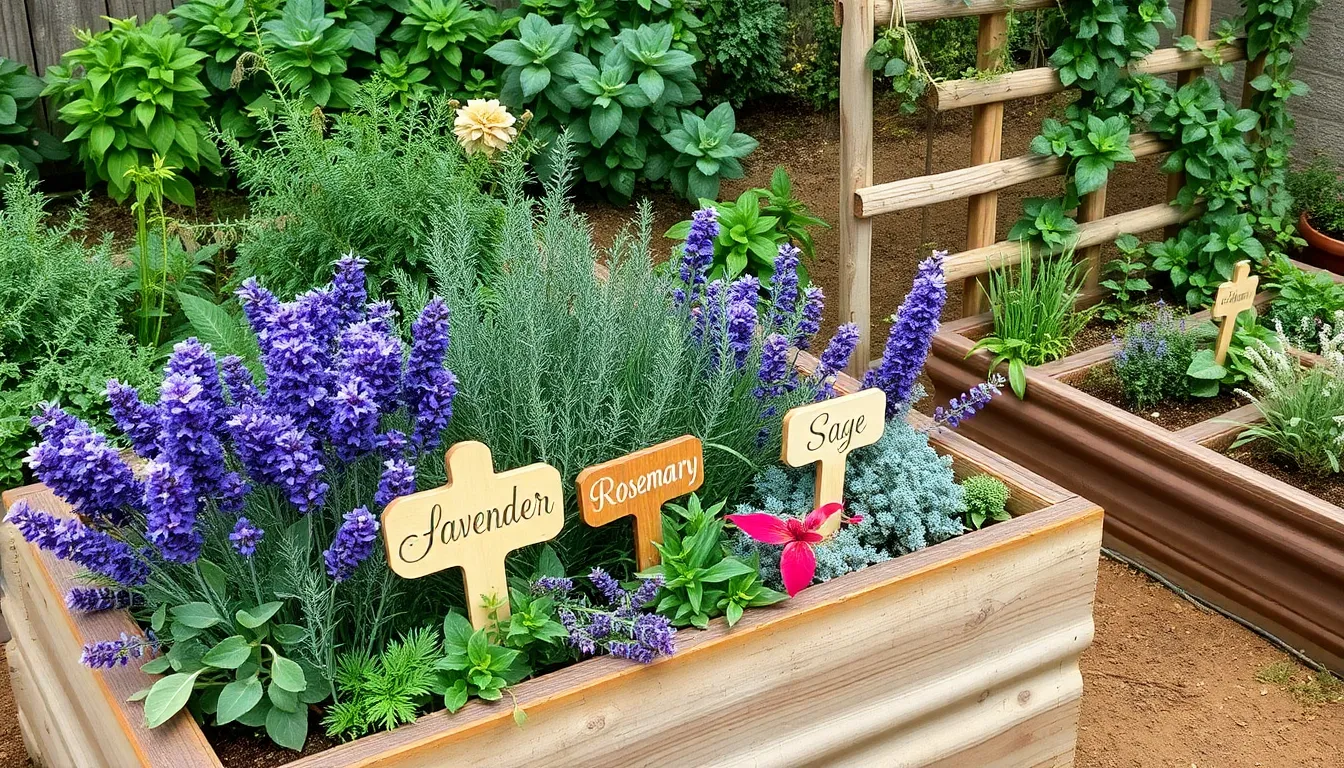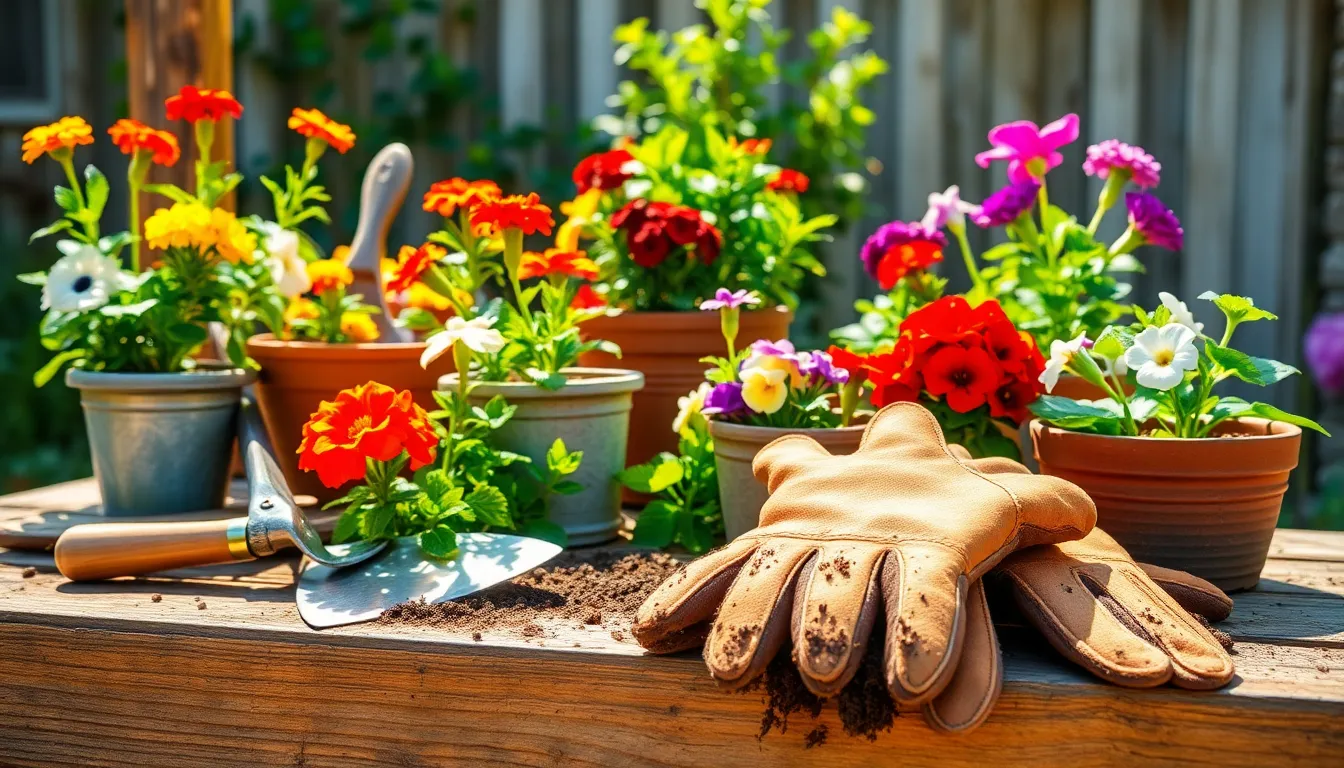In an era where sustainable living has taken center stage, the art of indoor gardening with minimal water usage presents a rewarding and eco-friendly challenge. Whether you’re just starting your green-thumb journey or you’re a seasoned plant enthusiast, low-water indoor gardening projects offer a unique way to cultivate lush, thriving plants with less impact on our precious water resources.
Diving into the world of low-water gardening, you’ll discover projects that are not only beautiful but also practical and easy to maintain. From understanding the needs of drought-tolerant plants to finding creative ways to incorporate them into your indoor spaces, this article is designed to guide you every step of the way.
Throughout this exploration, you’ll learn how to select the right plants, utilize innovative watering techniques, and create stunning indoor displays that require minimal upkeep. By embracing these low-water projects, you can enjoy the beauty and satisfaction of gardening while contributing to a more sustainable lifestyle. Get ready to transform your indoor spaces into a haven of greenery with less water, less hassle, and a lot more joy.
Choosing Low-Water Plant Varieties
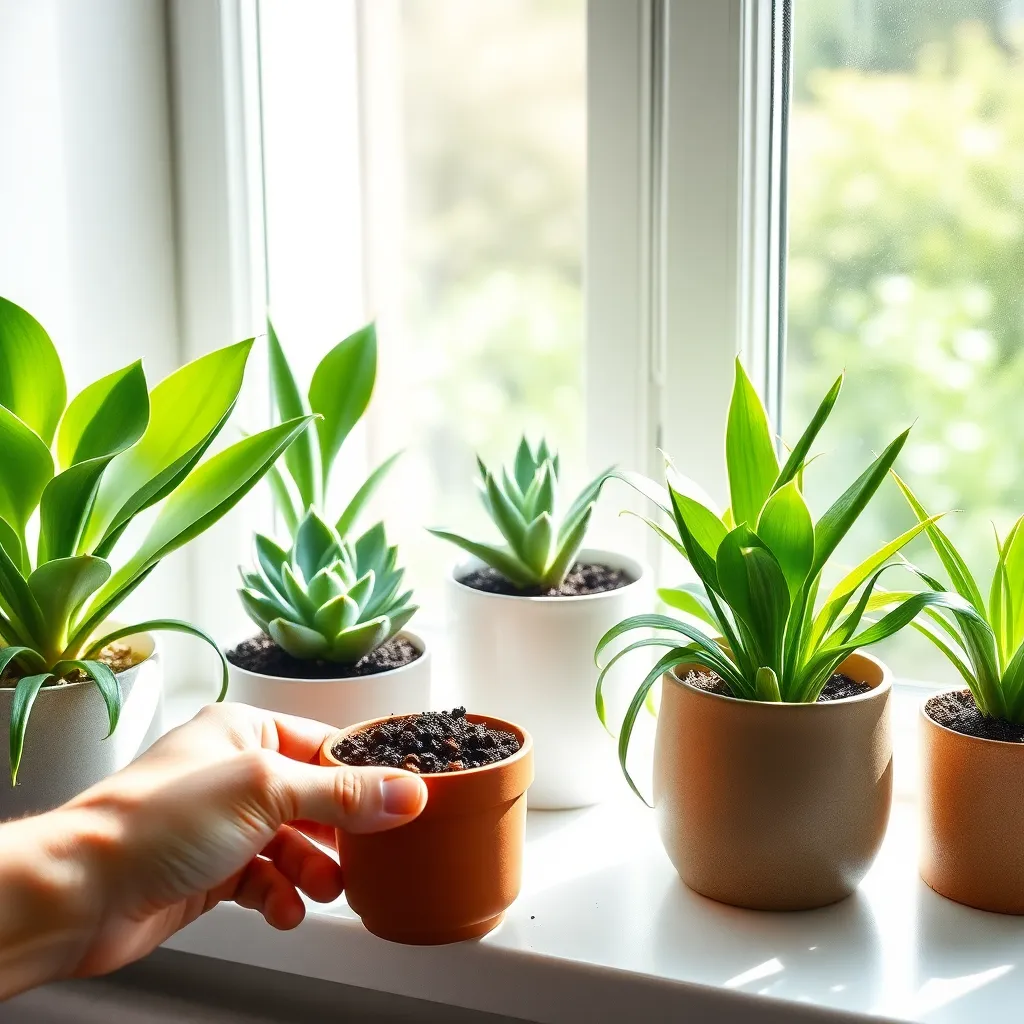
When selecting low-water plant varieties for indoor gardening, consider species that naturally thrive in arid conditions. Succulents like aloe vera and jade plants are excellent choices, as they store water in their leaves and require minimal watering.
It’s important to choose the right soil to support your low-water plants. Use a well-draining cactus mix or create your own by mixing regular potting soil with sand or perlite to prevent root rot.
Light conditions can significantly impact the success of your low-water garden. Place your plants in spots where they will receive bright, indirect sunlight for several hours a day, as this mimics their natural habitats.
For those interested in more advanced low-water gardening, consider experimenting with plants like snake plants or ZZ plants. These varieties not only require infrequent watering but also tolerate a wide range of light conditions, making them ideal for various indoor environments.
Efficient Watering Techniques
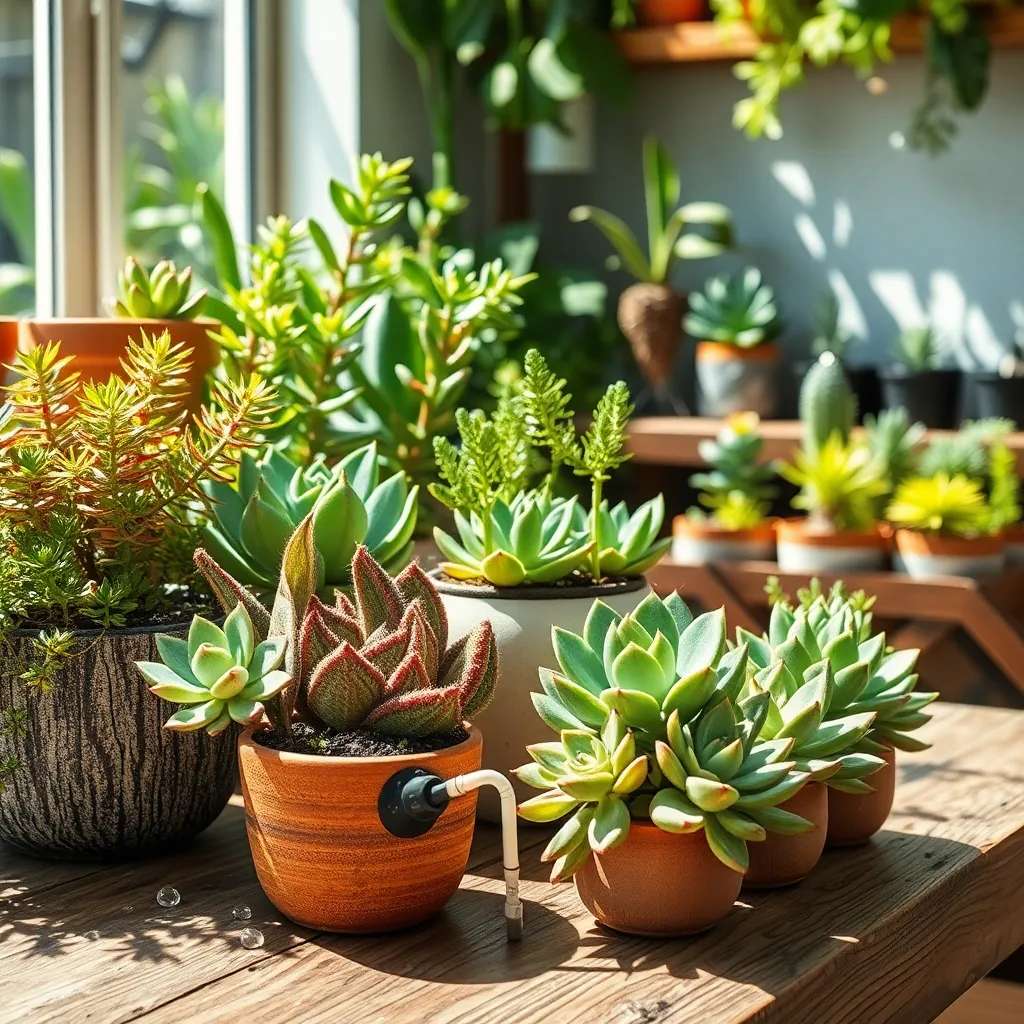
Efficient watering is essential for maintaining low-water indoor gardens, ensuring plants thrive without wasting resources. Begin by using pots with drainage holes to prevent water from pooling, which can lead to root rot.
To further conserve water, utilize a moisture meter to determine when your plants truly need watering. This tool helps avoid the common pitfall of overwatering, a frequent issue in indoor gardening.
Grouping plants with similar water needs together can streamline your watering routine and reduce water usage. This practice not only simplifies care but also creates a microenvironment that retains humidity, benefiting all grouped plants.
Advanced gardeners might consider using self-watering pots, which are excellent for maintaining consistent moisture levels. These pots can be a great investment, especially for those who travel frequently or have busy schedules.
Creative Container Options
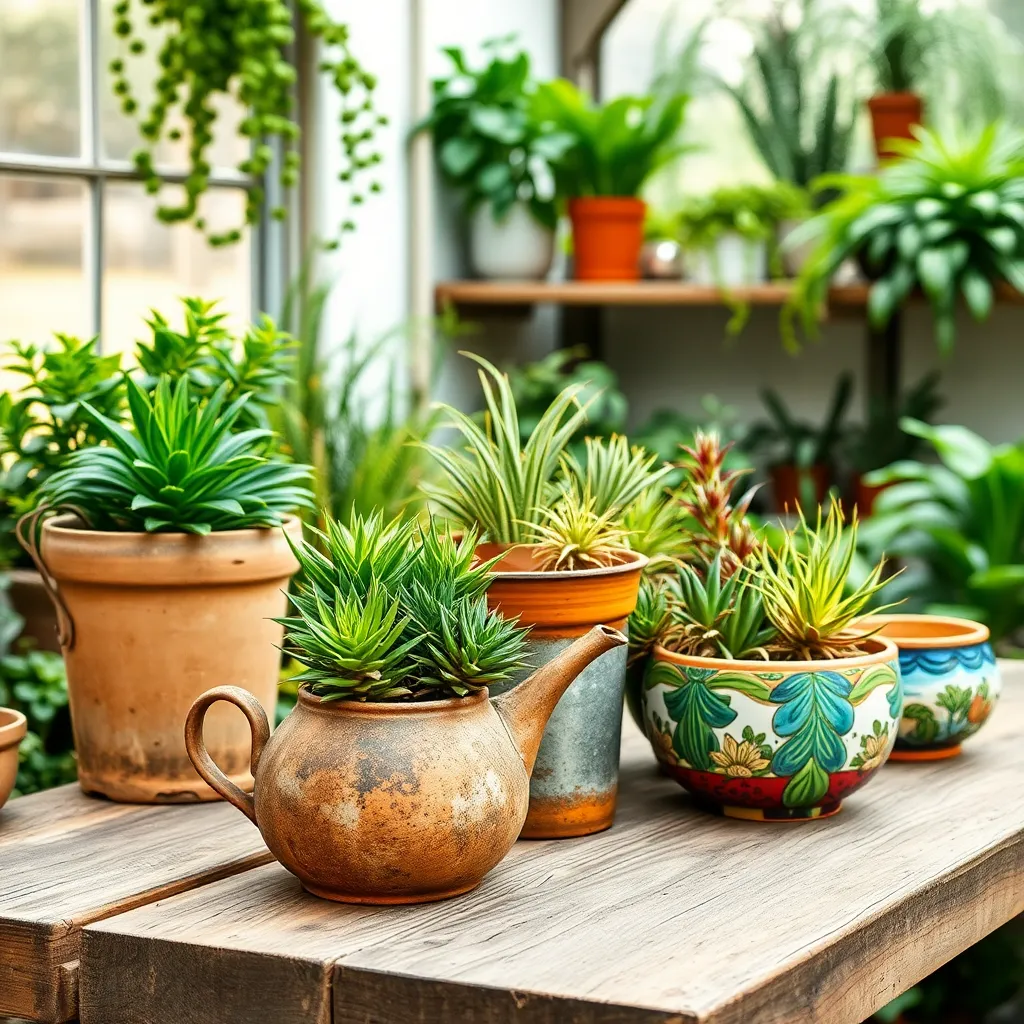
Containers are a versatile solution for indoor gardeners looking to conserve water. Opt for containers with good drainage, such as those with a built-in saucer or drainage holes, to prevent overwatering and root rot.
Choose materials like terracotta or ceramic, which can help regulate soil moisture. These materials allow for some evaporation, ensuring your plants aren’t sitting in water for too long.
Consider using self-watering pots to maintain consistent moisture levels with minimal effort. These containers feature a reservoir at the bottom, allowing plants to absorb water as needed, reducing the frequency of watering.
For an eco-friendly option, repurpose items like old tin cans or wooden boxes into creative planters. Ensure these have drainage holes drilled into them to avoid waterlogging the soil.
Optimal Lighting Conditions
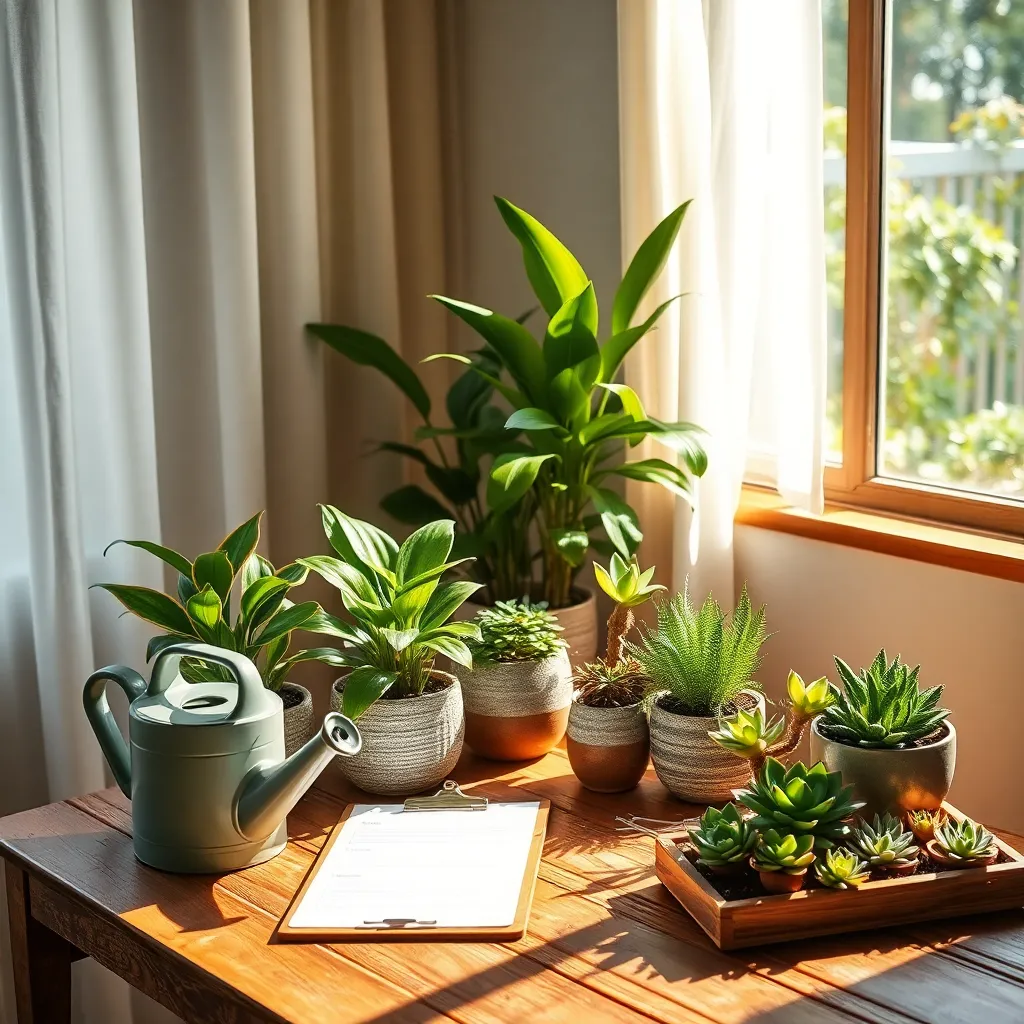
To ensure your indoor plants thrive, it’s crucial to provide them with optimal lighting conditions. Most low-water indoor plants, such as succulents and cacti, prefer bright, indirect light, making a south or east-facing window ideal.
For beginners, placing your plants in a spot where they receive filtered sunlight for at least six hours a day is a good start. If natural light is limited, consider using grow lights to supplement the lighting needs of your plants, ensuring they receive the right spectrum for photosynthesis.
Advanced gardeners might explore the use of timers with grow lights to simulate natural daylight cycles. This technique helps regulate the plant’s circadian rhythms, promoting healthier growth and more consistent blooming patterns.
It’s also important to monitor the distance between your plants and the light source. Keeping plants too close to a window can lead to leaf burn, while too far away might cause them to become leggy as they stretch towards the light.
Soil Mixes for Minimal Watering
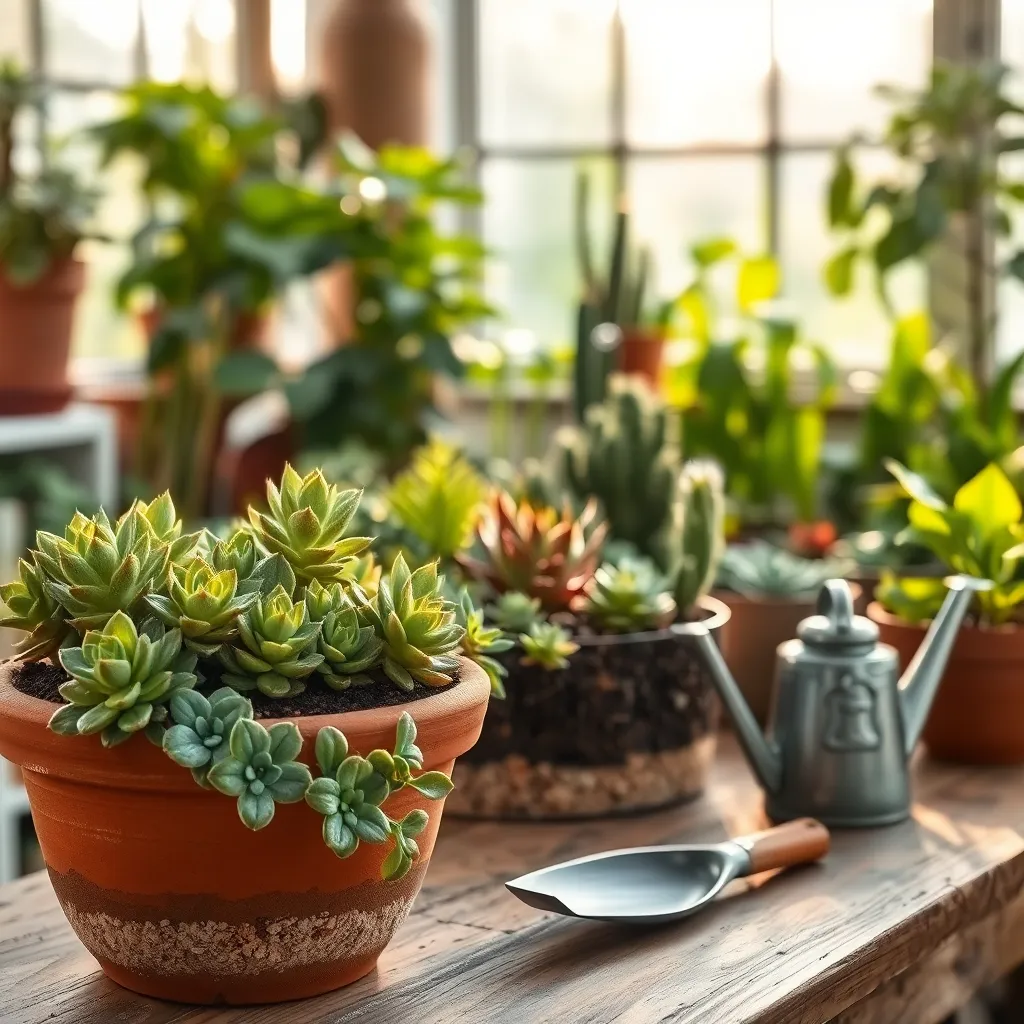
Creating the right soil mix is crucial for minimizing your watering needs, especially for indoor plants. Begin with a base of high-quality potting soil, which is designed to retain moisture while allowing for adequate drainage.
Adding materials like perlite or vermiculite can significantly improve aeration and moisture retention in your soil mix. These amendments help prevent waterlogging, which can lead to root rot, while ensuring that your plants have access to the water they need over time.
Incorporate organic matter such as coconut coir, which is an excellent sustainable option for retaining moisture. Coconut coir holds water well, rehydrates easily, and provides a nutrient-rich environment for your plants.
For those looking to go a step further, consider adding worm castings or well-aged compost to enhance soil fertility and structure. These organic components not only improve water retention but also supply essential nutrients to support plant growth and health.
Self-Watering Planters Explained
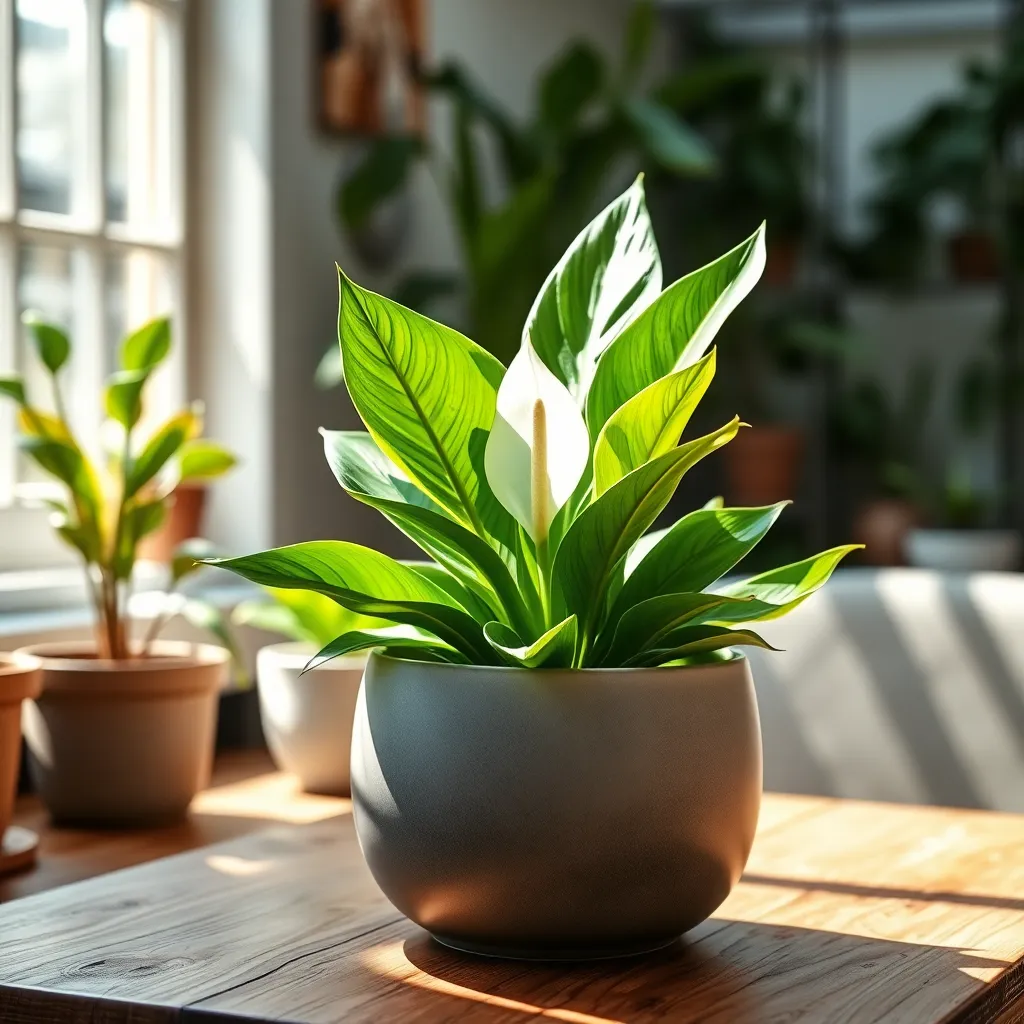
Self-watering planters offer a convenient solution for those who want to ensure their plants receive consistent moisture. These planters have a built-in reservoir that allows plants to draw up water as needed, reducing the frequency of manual watering.
For beginners, it’s essential to choose the right size of the planter based on the type of plant you are growing. Larger plants with extensive root systems, like tomatoes or peace lilies, benefit from bigger reservoirs to sustain their moisture needs.
Setting up a self-watering planter involves adding a layer of well-draining soil, such as a mix of peat moss and perlite. This mix allows for proper aeration while maintaining the necessary moisture level for your plants.
Advanced gardeners can experiment with different soil additives like activated charcoal, which helps prevent odor and mold in the planter. Consistently check the water level indicator to ensure the reservoir doesn’t dry out, especially during warmer months when evaporation rates are higher.
Using self-watering planters can significantly reduce the risk of overwatering, a common issue with traditional pots. They are particularly useful for busy individuals or those who travel frequently, as they provide peace of mind that plants will remain hydrated.
Hydroponics for Water Conservation
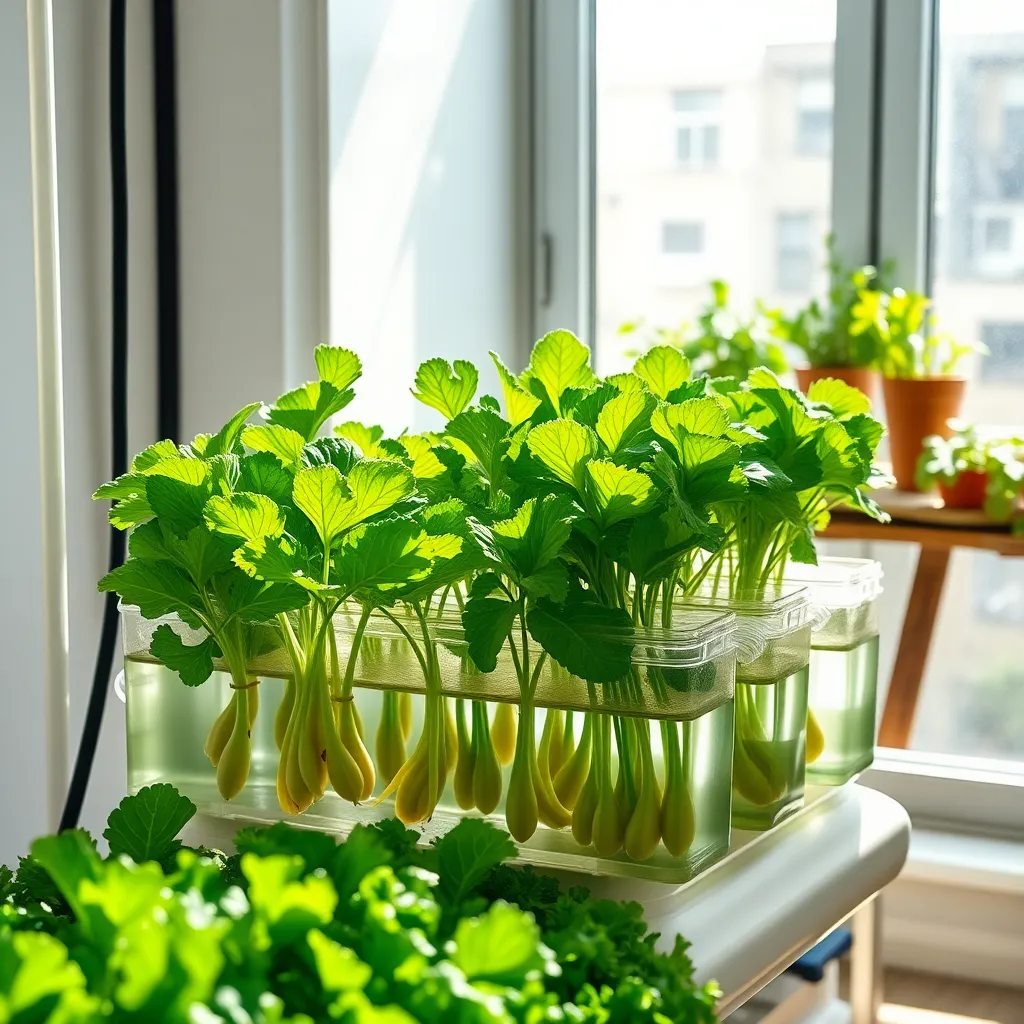
Hydroponics is a revolutionary method that allows plants to grow without soil, using a nutrient-rich water solution instead. This technique can significantly conserve water because the closed system recycles water, using up to 90% less than traditional soil gardening.
Getting started with hydroponics is easier than you might think, making it perfect for both beginners and experienced gardeners. Start with a simple setup like a **Kratky method** system, which requires just a container, a growing medium, and a nutrient solution.
For those new to hydroponics, lettuce and herbs such as basil and mint are excellent starter plants due to their quick growth and low nutrient requirements. Ensure your plants receive adequate light by placing them near a sunny window or using **LED grow lights** to mimic sunlight.
Advanced gardeners can experiment with more complex systems like **Nutrient Film Technique (NFT)**, which involves a continuous flow of nutrient solution over the roots. Regularly check and adjust the **pH and nutrient levels** to ensure optimal plant health and growth, aiming for a pH of about 5.5 to 6.5.
Using Mulch to Retain Moisture
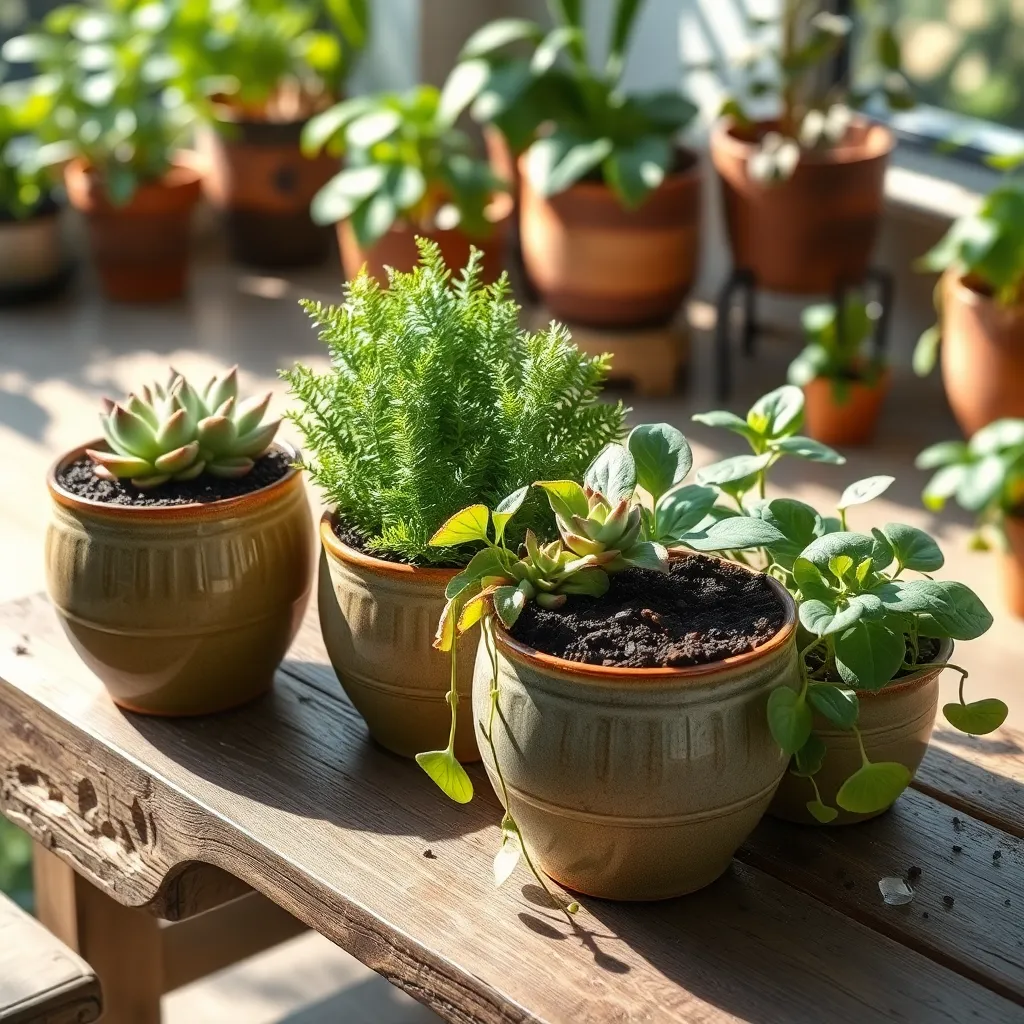
Mulching is a simple yet effective way to retain moisture in your indoor garden, making it a perfect choice for low-water gardening projects. By covering the soil surface with a layer of organic material, such as shredded bark or coco coir, you significantly reduce evaporation and maintain a consistent soil temperature.
Beginners can start by applying a thin layer of mulch—around 1 to 2 inches—over the potting soil of their indoor plants. This not only helps conserve water but also adds a decorative touch to your plant arrangement. For more experienced gardeners, consider using **specialized mulches like pumice or perlite** which also improve soil aeration.
While mulching is beneficial for most indoor plants, it is essential to select the right type of mulch for your specific plant needs. For instance, succulents and cacti prefer inorganic mulches such as gravel or stone that don’t retain excess moisture. Ensure that the mulch stays a few inches away from the plant’s stem to prevent rot and other issues.
Experienced gardeners may experiment with **layering techniques**, placing a water-retentive layer over a more decorative one to balance aesthetics with functionality. An advanced tip is to occasionally mix the mulch into the top layer of soil, which can help improve the soil’s nutrient profile over time. By using mulch strategically, you can significantly extend the periods between watering, making your indoor garden more sustainable and easy to maintain.
Monitoring Plant Health Indicators
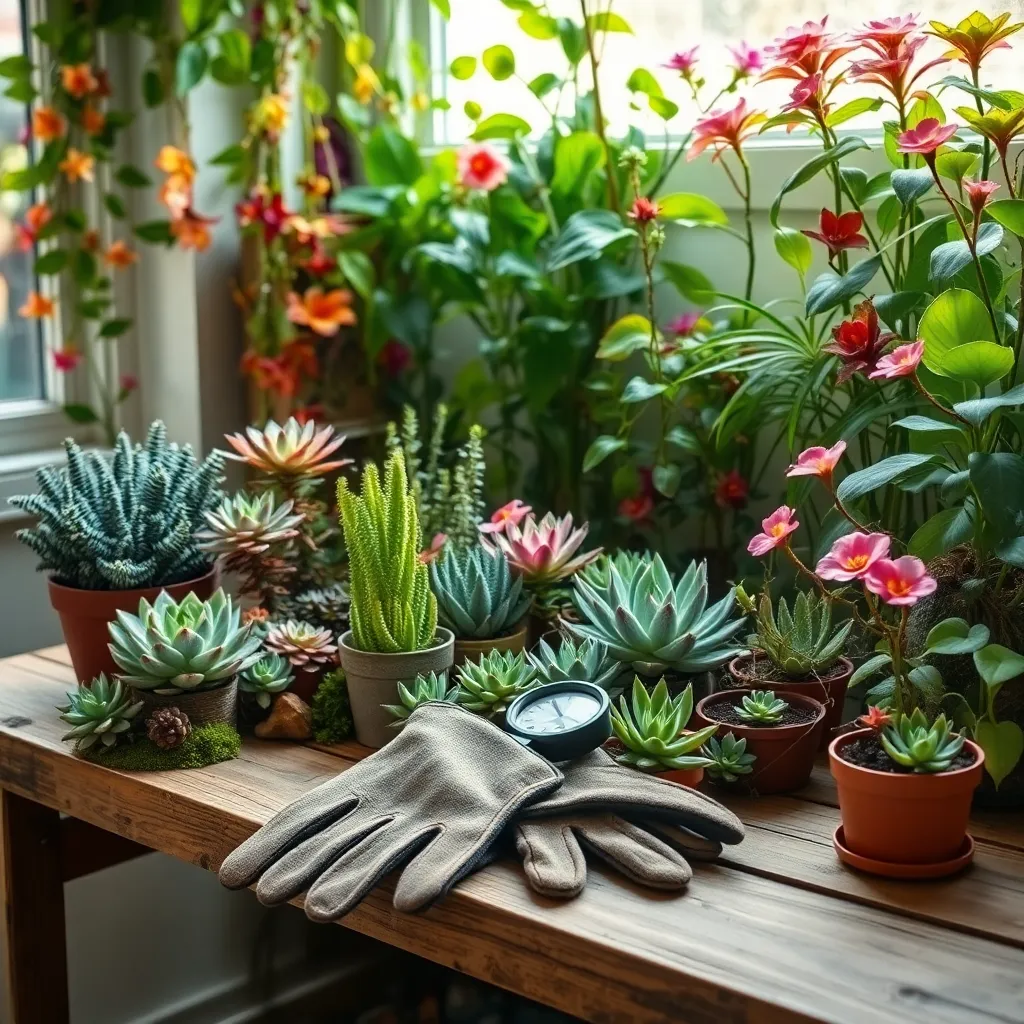
Ensuring your plants remain healthy starts with regularly checking key indicators such as leaf color and texture. Yellowing leaves can signal overwatering or nutrient deficiencies, while crispy, brown edges often indicate underwatering or low humidity.
It’s also essential to examine the soil moisture level by sticking your finger an inch into the soil. If it feels dry, it’s time to water, but if it’s still moist, hold off to prevent root rot.
Another important indicator is the plant’s growth rate and overall appearance. Slow growth or a sparse canopy may suggest insufficient light, so consider moving your plant closer to a window or supplementing with a grow light.
For more advanced monitoring, you can use a moisture meter or a pH tester to ensure your plants are in optimal growing conditions. Keep your soil’s pH level in check with occasional tests to ensure your plants are absorbing nutrients effectively.
Sustainable Gardening Practices

Embracing sustainable gardening practices is a rewarding way to maintain a thriving indoor garden while conserving resources. Start by choosing low-water plant varieties like succulents, snake plants, and ZZ plants, which are naturally adapted to drier conditions and require minimal watering.
Another key practice is using recycled materials for planting containers. Consider repurposing items such as glass jars, tin cans, or old ceramic pots, which can add a unique touch to your garden while reducing waste.
For soil, opt for a high-quality, well-draining potting mix that retains moisture without becoming waterlogged. This type of soil is often a blend of peat moss, perlite, and vermiculite, which supports healthy root development and reduces the need for frequent watering.
Advanced gardeners might experiment with self-watering systems that ensure plants receive a steady supply of moisture without excess waste. These systems can be as simple as placing a wick in the soil that draws water from a reservoir or using specially designed self-watering pots available at garden centers.
Conclusion: Growing Success with These Plants
In exploring the world of low-water indoor gardening, we’ve uncovered ten innovative projects that not only enhance your living space but also nurture the foundational elements of a thriving relationship. From the patience required in nurturing a succulent to the adaptability seen in air plants, each project mirrors a crucial relationship concept: patience, adaptability, mutual growth, communication, resilience, balance, mindfulness, shared interests, nurturing space, and sustainability. These projects serve as gentle reminders that relationships, much like gardens, require care, attention, and the right conditions to flourish.
As your immediate next step, choose one of these projects to embark on with your partner, allowing the experience to cultivate meaningful conversations and deepen your connection. Remember, every small effort in nurturing your bond can lead to significant growth and understanding.
Don’t forget to bookmark this article; it’s a valuable resource for when you need a quick relationship boost or a reminder of the simple yet profound ways to strengthen your bond. As you continue to invest in your relationship, know that success is a journey enriched by continuous learning and intentional actions. Let this be a stepping stone towards a resilient and joyful partnership.

